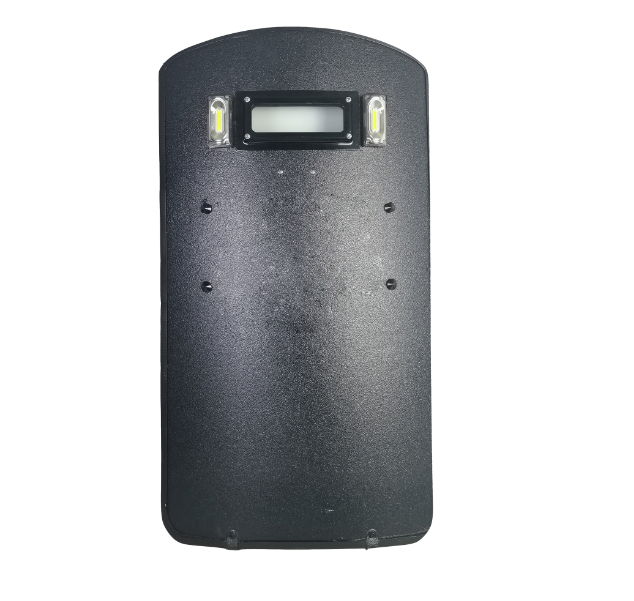When you think about safety in high-risk situations, Bulletproof Shields often come to mind. Law enforcement agencies rely on these shields during intense operations like building searches and active shooter incidents. They provide crucial protection for officers on the front lines. In combat zones, military personnel use them to enhance their safety against ballistic threats. Security professionals also find them invaluable, using shields to safeguard clients and assets in various settings. Even civilians are turning to bulletproof shields for personal safety, especially in areas prone to violence. These shields have become essential tools for ensuring safety across different scenarios.
Understanding Bulletproof Shields
When you hear about Bulletproof Shields, you might wonder what exactly they are and why they’re so important. Let’s break it down for you.
Definition and Importance
Bulletproof shields, often called ballistic shields, serve as vital protective tools in high-risk environments. These shields are designed to stop bullets and other projectiles, providing mobile cover against various threats. You’ll find them used by law enforcement, military personnel, and security professionals. Their primary function is to protect users from gunfire, making them essential in situations like active shooter incidents or combat zones. For many, these shields can mean the difference between life and death.
Key Features and Functions
So, what makes these shields so effective? Here are some key features:
- Advanced Materials: Most bulletproof shields are made from materials like Kevlar or UHMWPE. These materials absorb and dissipate the kinetic energy of bullets, reducing the risk of injury.
- Lightweight Design: Despite their protective capabilities, many shields are lightweight. This ensures that you can move quickly and maintain maneuverability during tactical operations.
- Variety of Sizes and Shapes: Shields come in different sizes and shapes to suit specific needs. Some are small enough to protect just the torso, face, and neck, while others offer full-body coverage.
- Viewing Ports: Many modern shields include clear armored viewing ports. These allow you to maintain visibility while staying protected.
These features make bulletproof shields indispensable in various scenarios, from SWAT operations to personal protection in volatile environments. As technology advances, these shields continue to evolve, offering even better performance and protection.
Types and Levels of Protection
When it comes to Bulletproof Shields, understanding the types and levels of protection they offer is crucial. Let’s dive into the different kinds of shields and the protection ratings they provide.
Types of Bulletproof Shields
Bulletproof shields come in various forms, each designed for specific scenarios. Here’s a closer look at the main types:
Handheld Shields
Handheld shields are the most common type. You can easily carry them, making them ideal for quick response situations. These shields offer mobility and flexibility, allowing you to maneuver through tight spaces. They typically cover the torso and head, providing essential protection during tactical operations. Their lightweight design ensures you can move swiftly without compromising safety.
Vehicle-Mounted Shields
For situations requiring more extensive coverage, vehicle-mounted shields come into play. These shields attach to vehicles, offering protection for multiple individuals. They’re perfect for scenarios where you need to advance under fire or protect a group. While they provide superior coverage, they lack the portability of handheld shields. However, in high-risk environments, the added protection can be invaluable.
Protection Levels and NIJ Ratings
The level of protection a bulletproof shield offers is determined by its National Institute of Justice (NIJ) rating. These ratings help you understand what kind of threats a shield can withstand.
Level I to Level IV Ratings
- Level I: Offers basic protection against low-caliber handguns. It’s suitable for situations with minimal threat levels.
- Level II: Provides defense against higher caliber handguns. This level is common among law enforcement for everyday use.
- Level III: Designed to stop rifle rounds. It’s ideal for high-risk operations where you might face more powerful firearms.
- Level IV: The highest standard, capable of stopping armor-piercing rounds. This level is essential for military personnel in combat zones.
Each level offers increased protection but comes with a higher price tag. You must balance your need for protection with your budget.
Specialized Ratings for Specific Threats
Some shields have specialized ratings for unique threats. These might include protection against blunt force trauma, heat, and flames. When choosing a shield, consider the specific threats you might encounter. This ensures you have the right level of protection for your needs.
Understanding these types and levels of protection helps you make informed decisions when selecting a bulletproof shield. Whether you’re in law enforcement, the military, or seeking personal safety, knowing what each shield offers ensures you choose the right one for your situation.
Benefits of Using Bulletproof Shields
When you think about safety in high-risk situations, bulletproof shields offer significant advantages. They provide more than just protection; they enhance your ability to respond effectively in dangerous environments.
Enhanced Protection
- Comprehensive Safety: Bulletproof shields act as a mobile barrier between you and potential threats. They are designed to stop bullets and other projectiles, ensuring your safety in volatile situations. Whether you’re in law enforcement or a civilian seeking personal protection, these shields can be a lifesaver.
- Versatile Defense: You can rely on bulletproof shields in various scenarios. From active shooter incidents to combat zones, they offer a reliable defense against ballistic threats. Their ability to absorb and dissipate the kinetic energy of bullets makes them indispensable in high-risk environments.
- Peace of Mind: Knowing you have a bulletproof shield at your disposal provides peace of mind. It allows you to focus on the task at hand without constantly worrying about your safety. This mental assurance can be crucial in maintaining composure during tense situations.
Tactical Advantages
- Mobility and Flexibility: Bulletproof shields are designed for easy maneuverability. You can move swiftly and adapt to changing circumstances without being weighed down. This mobility is essential in tactical operations where speed and agility are critical.
- Strategic Positioning: With a bulletproof shield, you can position yourself strategically. Whether advancing towards a threat or retreating to safety, the shield offers a tactical advantage by providing cover while allowing you to maintain visibility through features like viewing ports.
- Enhanced Response: In high-pressure situations, quick decision-making is vital. Bulletproof shields enable you to respond effectively by offering protection without hindering your movements. This advantage can be the difference between success and failure in critical operations.
By understanding the benefits of bulletproof shields, you can appreciate their role in ensuring safety and enhancing tactical capabilities. Whether you’re on the front lines or seeking personal protection, these shields offer invaluable support in navigating dangerous environments.
Materials Used in Bulletproof Shields
When it comes to bulletproof shields, the materials used in their construction play a crucial role in determining their effectiveness. Let’s explore some of the common materials and their unique properties.
Common Materials
Kevlar
Kevlar stands out as one of the most popular materials in bulletproof shield construction. You might recognize it as the same material used in bulletproof vests. This synthetic fiber is known for its high tensile strength-to-weight ratio, making it incredibly strong yet lightweight. Kevlar fibers can absorb and disperse the energy from bullets, reducing the risk of penetration. Its flexibility allows for easy maneuverability, which is essential in high-pressure situations.
Polyethylene
Polyethylene, specifically Ultra-High Molecular Weight Polyethylene (UHMWPE), is another material frequently used in ballistic shields. This material offers excellent protection against various threats while remaining lightweight. UHMWPE fibers are woven together to create a dense fabric that can stop bullets by absorbing and dissipating their kinetic energy. This makes it an ideal choice for handheld shields where mobility is key. Additionally, polyethylene is resistant to moisture and chemicals, enhancing its durability in different environments.
Pros and Cons of Different Materials
Understanding the pros and cons of these materials can help you make informed decisions when choosing a bulletproof shield.
- Kevlar:
- Pros: High strength-to-weight ratio, flexibility, and proven effectiveness in stopping bullets.
- Cons: Can degrade over time when exposed to UV light and moisture, requiring proper maintenance.
- Polyethylene:
- Pros: Lightweight, excellent ballistic protection, and resistant to environmental factors.
- Cons: Can be more expensive than other materials and may not offer the same level of protection against sharp objects.
Both Kevlar and polyethylene have their strengths and weaknesses. Your choice will depend on your specific needs and the threats you anticipate facing. By understanding these materials, you can select a bulletproof shield that offers the right balance of protection, weight, and durability for your situation.
Choosing the Right Bulletproof Shield
When you’re in the market for a bulletproof shield, making the right choice is crucial. You want to ensure that the shield you select meets your specific needs and offers the best protection possible. Let’s explore some key factors to consider and how to balance protection with mobility.
Factors to Consider
Threat Level
First and foremost, assess the threat level you might face. Are you dealing with low-caliber handguns or high-powered rifles? The type of threat will dictate the level of protection you need. For instance, if you’re in law enforcement or the military, a shield rated for rifle threats might be necessary. This ensures you’re prepared for the worst-case scenarios.
Weight and Ergonomics
Weight plays a significant role in your decision. A lightweight shield allows you to move quickly and efficiently. However, you don’t want to sacrifice protection for weight. Look for shields that strike a balance between being lightweight and offering robust protection. Ergonomics also matter. A shield with a supportive grip system can make a big difference in comfort and usability during extended operations.
Officers and supervisors have emphasized the importance of lightweight, rifle-rated shields with viewports and supportive grips. They find these features essential for patrol situations.
Balancing Protection and Mobility
Finding the right balance between protection and mobility is key. You want a shield that offers maximum safety without hindering your movement. Consider the following:
- Mobility Needs: If you’re frequently on the move, a handheld shield might be your best bet. It provides flexibility and ease of use in tight spaces. On the other hand, if you’re in a stationary position or need to protect multiple people, a vehicle-mounted shield could be more suitable.
- Additional Features: Some shields come with added features like viewports for visibility or mounted lights. While these can enhance functionality, they may add weight. Decide which features are essential for your situation and which you can do without.
Choosing the right bulletproof shield involves weighing your specific needs against the available options. By considering threat levels, weight, ergonomics, and additional features, you can select a shield that provides the protection you need while allowing you to remain agile and effective in high-risk environments.
Bulletproof Shields play a vital role in ensuring safety across various high-risk environments. Whether you’re in law enforcement, the military, or seeking personal protection, choosing the right shield tailored to your specific needs is crucial. Consider factors like threat level and mobility to make an informed decision. Recent advancements in shield technology have made them lighter and more effective, enhancing their protective capabilities. As technology continues to evolve, you can expect even greater improvements in shield performance, offering enhanced security and peace of mind.
See Also
Tips For Selecting The Perfect Bulletproof Helmet
Is Ceramic Suitable For Bulletproof Plate Manufacturing?
Key Factors For Selecting The Appropriate Body Armor Level
Understanding The Role Of Ceramic In Bulletproof Plates
Exploring The Purpose And Function Of Riot Shields
Post time: Aug-01-2025

